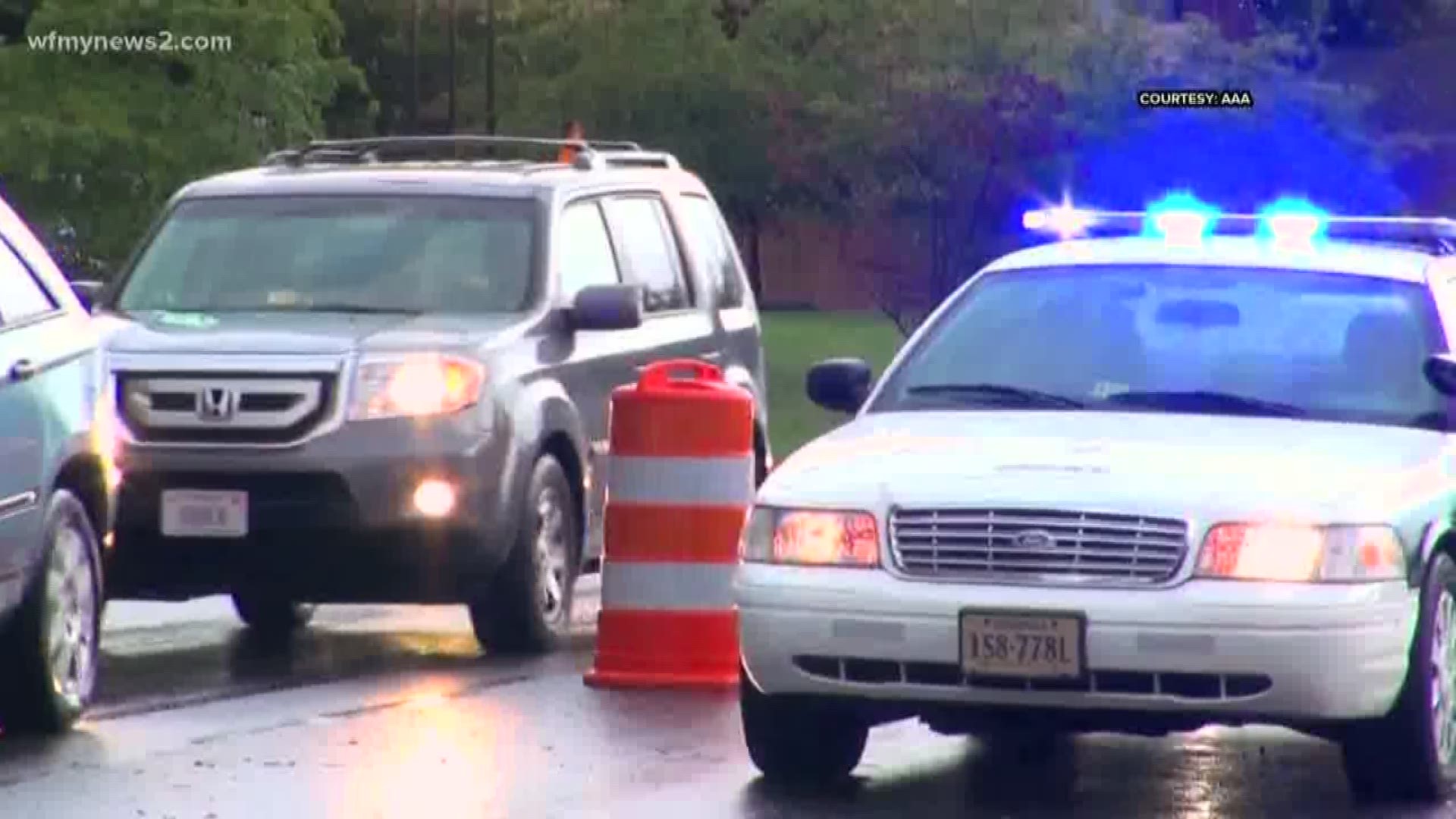GREENSBORO, N.C. — Statistics show drinking and driving is the most troubling factor in roadway accidents on New Year's Eve. The holiday is traditionally marked by champagne toasts and all-night open bar specials.
According to National Highway Traffic Safety Administration, about 30 people in the United States die in drunk-driving crashes every day. That's one person every 50 minutes. Statistics also show 10,511 people died due to drunk-driving crashes in 2018.
During the New Year's and Christmas periods in 2018, there were 285 drunk-driving-related fatalities. For those reasons and more, the NHTSA is partnering with local law enforcement to spread three life-saving messages: "Drive Sober Or Get Pulled Over," "If You Feel Different, You Drive Different," and "Drive High Get A DUI."
The NHTSA offers the following driving safety tips:
Tip #1: Drive with care.
- Plan your trips ahead of time. Decide what time to leave and which roads to take. Try to avoid heavy traffic, poor weather and high-speed areas.
- Wear your safety belt—and wear it correctly. (It should go over your shoulder and across your lap.)
- Drive at the speed limit. It's unsafe to drive too fast or too slow.
- Be alert! Pay attention to traffic at all times.
- Keep enough distance between you and the car in front of you.
- Be extra careful at intersections. Use your turn signals and remember to look around you for people and other cars.
- Check your blind spot when changing lanes or backing up.
- Be extra careful at train tracks. Remember to look both ways for trains.
- When you take a new medicine, ask your doctor or pharmacist about side effects. Many medicines may affect your driving even when you feel fine. If your medicine makes you dizzy or drowsy, talk to your doctor to find out ways to take your medicine so it doesn't affect your driving.
- Never drink and drive.
- Never drive when you feel angry or tired. If you start to feel tired, stop your car somewhere safe. Take a break until you feel more alert.
- Never eat, drink or use a cell phone while driving.
- If you don't see well in the dark, try not to drive at night or during storms.
- If you have trouble making left turns at an intersection, make three right turns instead of one left turn.
- If you can, avoid driving in bad weather, such as during rain, sleet or snow.
Tip #2: Take care of your car.
- Make sure you have plenty of gas in your car.
- Have your car tuned up regularly.
- Keep your windshields and mirrors clean.
- Keep a cloth in your car for cleaning windows.
- Replace your windshield wiper blades when they become worn out.
- Consider using Rain-X® or a similar product to keep your windows clear.
- If you are shopping for a new car, look for a car with power steering and automatic transmission.
Tip #3: Know where you can find a ride.
- How do you get around when your car is in the shop? If you don't know the answer to this question, it's time for you to put together a "transportation plan."
- A transportation plan is a list of all the ways that you can get around. Use this list when your car is in the shop or when you don't feel safe driving. Your transportation plan might include:
- Rides from friends and family
- Taxi
- Bus or train
- Senior shuttle
- If you need help creating a transportation plan, your doctor can get you started.
Tip #4: Take a driver safety class.
- To learn how to drive more safely, try taking a class. In a driver safety class, the instructor teaches you skills that you can use when you are driving. To find a class near you, call one of the following programs:
- AARP 55 ALIVE Driver Safety Program
- 1 888 227-7669
- AAA Safe Driving for Mature Operators Program
- Call your local AAA club to find a class near you.
- National Safety Council Defensive Driving Course
- 1 800 621-7619
- Driving School Association of the Americas, Inc.
- 1 800 270-3722
- These classes usually last several hours. They don't cost much—some are even free. As an added bonus, you might receive a discount on your auto insurance after taking one of these classes. Talk to your insurance company to see if it offers a discount.

